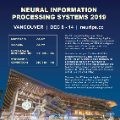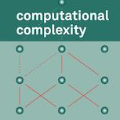We introduce a simple, rigorous, and unified framework for solving nonlinear partial differential equations (PDEs), and for solving inverse problems (IPs) involving the identification of parameters in PDEs, using the framework of Gaussian processes. The proposed approach (1) provides a natural generalization of collocation kernel methods to nonlinear PDEs and IPs, (2) has guaranteed convergence with a path to compute error bounds in the PDE setting, and (3) inherits the state-of-the-art computational complexity of linear solvers for dense kernel matrices. The main idea of our method is to approximate the solution of a given PDE with a MAP estimator of a Gaussian process given the observation of the PDE at a finite number of collocation points. Although this optimization problem is infinite-dimensional, it can be reduced to a finite-dimensional one by introducing additional variables corresponding to the values of the derivatives of the solution at collocation points; this generalizes the representer theorem arising in Gaussian process regression. The reduced optimization problem has a quadratic loss and nonlinear constraints, and it is in turn solved with a variant of the Gauss-Newton method. The resulting algorithm (a) can be interpreted as solving successive linearizations of the nonlinear PDE, and (b) is found in practice to converge in a small number (two to ten) of iterations in experiments conducted on a range of PDEs. For IPs, while the traditional approach has been to iterate between the identifications of parameters in the PDE and the numerical approximation of its solution, our algorithm tackles both simultaneously. Experiments on nonlinear elliptic PDEs, Burgers' equation, a regularized Eikonal equation, and an IP for permeability identification in Darcy flow illustrate the efficacy and scope of our framework.
翻译:我们引入了一个简单、严格和统一的框架,以解决非线性部分差异方程式(PDEs),并解决与使用 Gaussian 进程框架确定 PDE 参数有关的反向问题(IPs) 。 提议的方法(1) 提供了非线性 PDE 和 IP 的合用内核内核方法的自然概括化, (2) 保证了与计算 PDE 设置中误差界限的路径相融合, (3) 继承了用于密集内核矩阵的线性解析器的高级计算复杂性。 我们方法的主要理念是, 接近给定的 PDE 参数的解决方案, 使用 Gaussian 进程测算器的测算器。 尽管这种优化问题为无限的 PDE 和 IP IP, 但它可以引入与 PDE 匹配点的衍生物值相对对应的附加变量; 这让高斯内核内层内层内基内基内基内基内基内基内基内基内基内基内基内基内基内基内基内基内基内基内基内基内底内基内基内基内基内基内基内基内基内基内基内基内基内基内基内基内基内基内基内基内基内基内基内基内基内基内基内基内基内基内基内基内基内基内基内基内基内基内基内基内基内基内基内基内基内基内基内基内基内基内基内基内基内基内基内基内基内基内基内基内基内基内基内基内基内基内基内基内基内基内基内基内基内基内基内基内基内基内基内基内基内基内基内基内基内基内基内基内基内基内基内基内基内基内基内基内基内基内基内基内基内基内基内基内基内基内基内基内基内基内基内基内基内基内基内基内基内基内基内基内基内基内基内基内基内基内基内基内基内基内基内基内基内基内基




